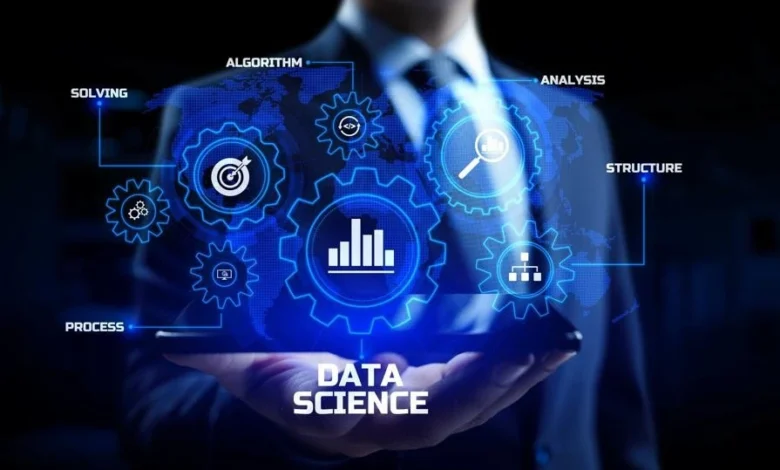Technology
A Curated List – Perfect Open Source Platform For Data Science

In the rapidly evolving field of data science, an open source platform plays a crucial role in enabling collaboration and innovation. This article presents a curated list of some of the most prominent open source platforms for data science, highlighting their features and applications.
Open Source Platforms
| Platform | Description | Use Cases |
|---|---|---|
| Jupyter Notebook | A web-based interactive environment that allows users to create notebooks containing live code, equations, visualizations, and descriptive text. | Data exploration, prototyping, and sharing results with peers through interactive notebooks. |
| Apache Spark | An open-source unified analytics engine for big data processing, with built-in modules for streaming, SQL, machine learning, and graph processing. | Big data analytics, real-time processing, and machine learning applications across industries. |
| TensorFlow | A powerful library for numerical computation and machine learning, offering a flexible ecosystem of tools, libraries, and community resources. | Image recognition, natural language processing, and reinforcement learning applications in diverse fields. |
| RStudio | An integrated development environment (IDE) for R, providing a user-friendly interface for R programming and data analysis. | Statistical analysis, data visualization, and reporting for academic and professional purposes. |
| Keras | A high-level neural networks API, written in Python and capable of running on top of TensorFlow, Theano, or CNTK. | Fast experimentation and prototyping in deep learning for image classification, text generation, and more. |
| Apache Airflow | An open source platform designed for programmatically authoring, scheduling, and monitoring complex workflows. | Data pipeline orchestration and automation for ETL processes and machine learning workflows. |
| Scikit-Learn | A simple and efficient tool for data mining and data analysis in Python, built on NumPy, SciPy, and Matplotlib. | Machine learning tasks, feature selection, model evaluation, and data preprocessing for various applications. |
| Pandas | A fast, flexible, and powerful open-source library for data analysis and manipulation in Python, offering ease of use for handling large datasets. | Data wrangling, analysis, and preparation for machine learning models and exploratory data analysis. |
1. Jupyter Notebook
- Offers support for various programming languages, such as Python, R, and Julia.
- Interactive visualizations allow users to see real-time changes and outputs.
- Markdown support for documentation enhances readability and presentation of code.
- Supports over 40 programming languages, making it a versatile tool for data scientists.
2. Apache Spark
- In-memory data processing significantly speeds up analytics and queries.
- Support for various data sources, including Hadoop, Cassandra, and Amazon S3.
- Scalable to large datasets, making it suitable for enterprises.
- Performs batch and streaming data processing in a distributed environment, making it ideal for large datasets.
3. TensorFlow
- Support for deep learning with high-level APIs for easy model building.
- Extensive model training capabilities, including distributed training.
- Compatibility with various platforms (CPUs, GPUs, TPUs) to enhance performance.
- Widely used for building and training machine learning models, particularly in deep learning.
4. RStudio
- Intuitive UI for R programming that simplifies the coding process.
- Integrated R Markdown support for creating dynamic documents that combine code and output.
- Tools for visualization, debugging, and package development streamline the workflow.
- Makes it easier for data scientists to write R code, visualize data, and produce reports.
5. Keras
- User-friendly and modular design allows for easy experimentation with different model architectures.
- Support for convolutional and recurrent networks, making it suitable for various applications.
- Simple and extensible API that enables quick prototyping.
- Simplifies the process of building deep learning models by providing user-friendly functions.
6. Apache Airflow
- Dynamic pipeline generation enables flexible workflow creation.
- Rich user interface for monitoring and managing tasks and workflows in real time.
- Extensible with plugins, allowing customization for specific needs.
- Automate data pipeline processes, ensuring efficient data management and analysis.
7. Scikit-Learn
- Provides a diverse set of algorithms for tasks like classification, regression, and clustering.
- Cross-validation and hyperparameter tuning tools for optimizing model performance.
- Easy integration with other libraries and tools in the Python ecosystem.
- Widely used for classical machine learning tasks and is favored for its ease of use.
8. Pandas
- Data structures (Series and DataFrame) for efficiently handling large datasets.
- Time series functionality that makes it suitable for financial and temporal data analysis.
- Data cleaning and preprocessing tools that simplify the preparation of data for analysis.
- Essential for data cleaning and preprocessing, making it a go-to tool for data scientists.
Summing Up
An open-source platform is an essential tool for data scientists. Thereby, providing the resources and flexibility needed to tackle complex data challenges. By leveraging these platforms, professionals can enhance their productivity, collaboration, and innovation in the field of data science.





